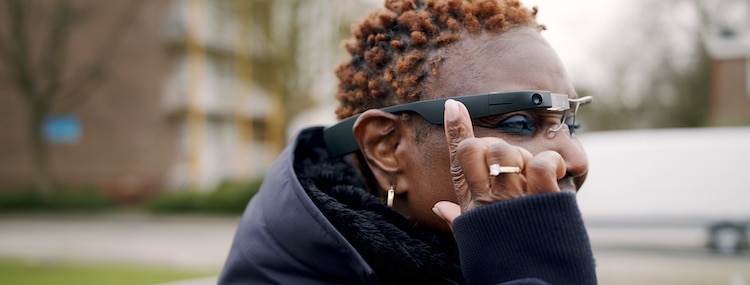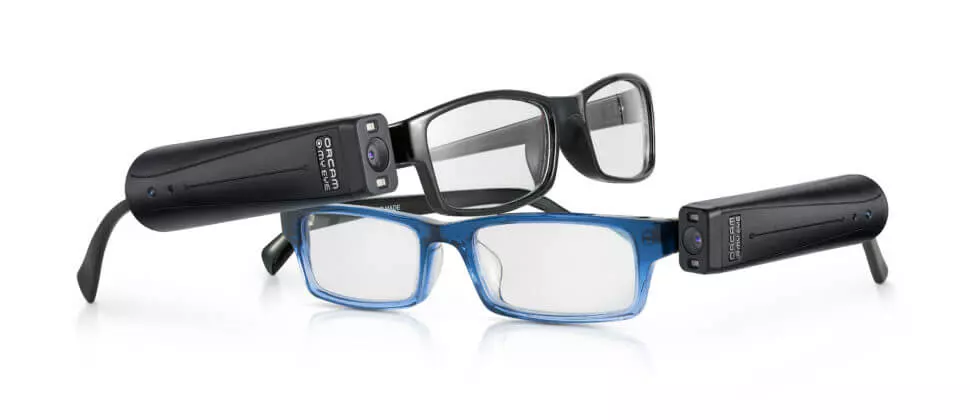Wearable Technology for Low Vision: Transforming How We Navigate the World
Wearable Technology for Low Vision: Transforming How We Navigate the World
Blog Article
Cutting-edge Solutions in Assistive Technology for Visual Impairment
The landscape of assistive technology for visual problems is evolving swiftly, providing a range of cutting-edge solutions that enhance access and independence. From innovative smart device applications that promote navigating to wearable devices developed for real-time support, these devices are reshaping the experiences of those with aesthetic problems. The assimilation of clever home innovations and instructional resources has the prospective to cultivate higher community interaction. The ramifications of these innovations increase critical questions regarding their ease of access and effectiveness in varied contexts, warranting a closer assessment of their broader effect.
Advancements in Mobile Phone Applications
In recent times, innovations in mobile phone applications have significantly changed the landscape of assistive technology for people with visual impairments. These applications take advantage of the effective sensors and abilities of contemporary mobile phones to give users with tools that enhance self-reliance and availability in their everyday lives.
Significant among these advancements are applications developed for object recognition, which use the mobile phone's electronic camera to identify things and supply spoken descriptions. Such features encourage customers to navigate their atmospheres better, whether recognizing products in stores or locating individual valuables in your home. Additionally, text-to-speech applications have actually boosted substantially, allowing users to record published message via their gadget's camera and obtain split second audio responses, consequently facilitating analysis and understanding.
Community-driven applications have cultivated social communication and source sharing amongst people with visual impairments, developing an encouraging network that improves their high quality of life. Generally, smart device applications have ended up being crucial allies in advertising freedom and accessibility for people with aesthetic disabilities.
Wearable Devices for Navigating
Wearable gadgets for navigation have actually become a groundbreaking solution for people with visual problems, providing hands-free help that improves flexibility and orientation. These gadgets commonly use innovative modern technologies, consisting of GPS, ultrasonic sensors, and expert system, to supply real-time feedback and direction to users as they browse their setting.
One significant instance of wearable navigation modern technology is wise glasses, which can identify obstacles and relay auditory or haptic feedback to the user, enabling risk-free and effective movement in different settings. Other devices, such as vests and belts geared up with sensing units, can similarly educate individuals of their environments by supplying notifies about neighboring items or adjustments in terrain.
Furthermore, many wearable tools integrate with smart device applications, making it possible for individuals to tailor their navigation preferences and obtain customized course pointers. This customization can substantially improve the customer experience, encouraging people to take a trip with greater confidence and self-reliance.
As technology remains to establish, the capacity for wearable navigation gadgets to boost the lifestyle for individuals with aesthetic problems continues to be considerable, paving the way for more easily accessible and inclusive settings.
Smart Home Innovation Integration

Furthermore, wise devices equipped with tactile user interfaces or auditory responses provide intuitive interactions that provide especially to the demands of those with visual impairments. For example, clever fridges can reveal their components and expiry days, while clever stoves can guide users through the cooking process with audio guidelines.
Home automation systems, such as smart doorbells and safety and security cams, use comfort by enabling individuals to get informs and accessibility live feeds via their smart phones, boosting individual safety and security (AI-powered visual aids). In addition, assimilation with mobile phones and tablets makes certain that customers can handle their home setting from anywhere within their properties
As clever home modern technology proceeds to develop, it holds the potential to change the living experiences of individuals with aesthetic disabilities, promoting independence and improving lifestyle in a significantly linked world.

Educational Tools and Resources
Access to efficient educational devices and sources is important for people with visual problems, as it empowers them to involve fully in their learning experiences. Different assistive modern technologies have been established to boost availability and foster independent understanding.
Furthermore, instructional software particularly made for visually damaged customers offers functions such as high-contrast settings and personalized text sizes. These devices suit varied learning styles and make certain that students can tailor their academic experience to their requirements.
In addition, accessibility to audio publications and virtual libraries broadens the array of readily available learning materials, allowing trainees to check out topics in deepness without the constraints enforced by typical print resources. Collaborative platforms that integrate availability attributes additionally promote group projects, guaranteeing that visually impaired students can contribute meaningfully alongside their peers.
Community Support and Interaction
A robust network of community support and involvement is important for individuals with visual impairments, cultivating a comprehensive setting where they can grow. Area organizations, neighborhood campaigning for teams, and volunteers play an essential function in offering resources, information, and companionship, which are vital for enhancing the quality of life for those influenced by aesthetic disabilities.
Involvement activities such as workshops, get-togethers, and assistance groups not only help with skill growth yet likewise advertise optometry career salary social interaction, lowering feelings of isolation. These initiatives motivate people to share successes, challenges, and experiences, thus enhancing neighborhood bonds. Furthermore, collaborations with regional look at here now organizations can lead to greater accessibility in public rooms, further incorporating people with visual problems into the community.
Innovation also improves neighborhood interaction with online platforms that provide online support groups and resources, allowing people to attach no matter geographical obstacles. By using both in-person and electronic remedies, communities can create a thorough support network. Eventually, cultivating partnership amongst numerous stakeholders-- including households, instructors, and medical care specialists-- makes sure that individuals with visual impairments obtain the alternative support necessary to navigate life properly and with self-respect.
Final Thought
Ingenious solutions in assistive modern technology for aesthetic impairment significantly boost the high quality of life for individuals encountering these difficulties. The integration of smart device applications, wearable gadgets, smart home technology, and instructional tools fosters better self-reliance and ease of access. Area support and involvement additional encourage visually damaged individuals, advertising inclusivity and participation in different elements of life. Collectively, these innovations not only change day-to-day experiences however additionally lead the way for a more equitable culture.
The landscape of assistive innovation for aesthetic problems is developing quickly, providing an array of cutting-edge services that improve availability and freedom. Community-driven applications have actually fostered social interaction and resource sharing among individuals with visual disabilities, producing a helpful network that improves their top quality of life. On the whole, smart device applications have actually become vital allies in advertising freedom and access for people with aesthetic problems.
Several people with aesthetic disabilities are discovering higher autonomy with the combination of smart home innovation.Ingenious services in assistive innovation for visual this article impairment significantly boost the top quality of life for people dealing with these difficulties.
Report this page